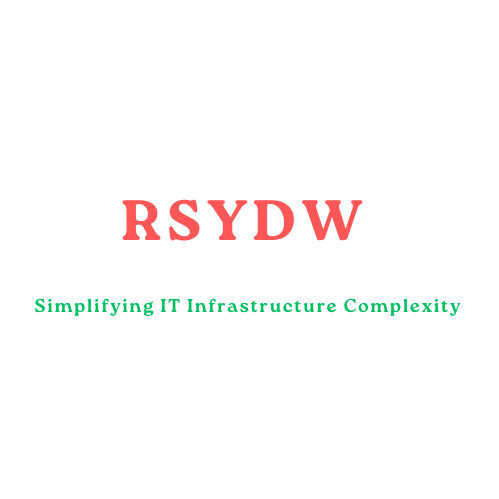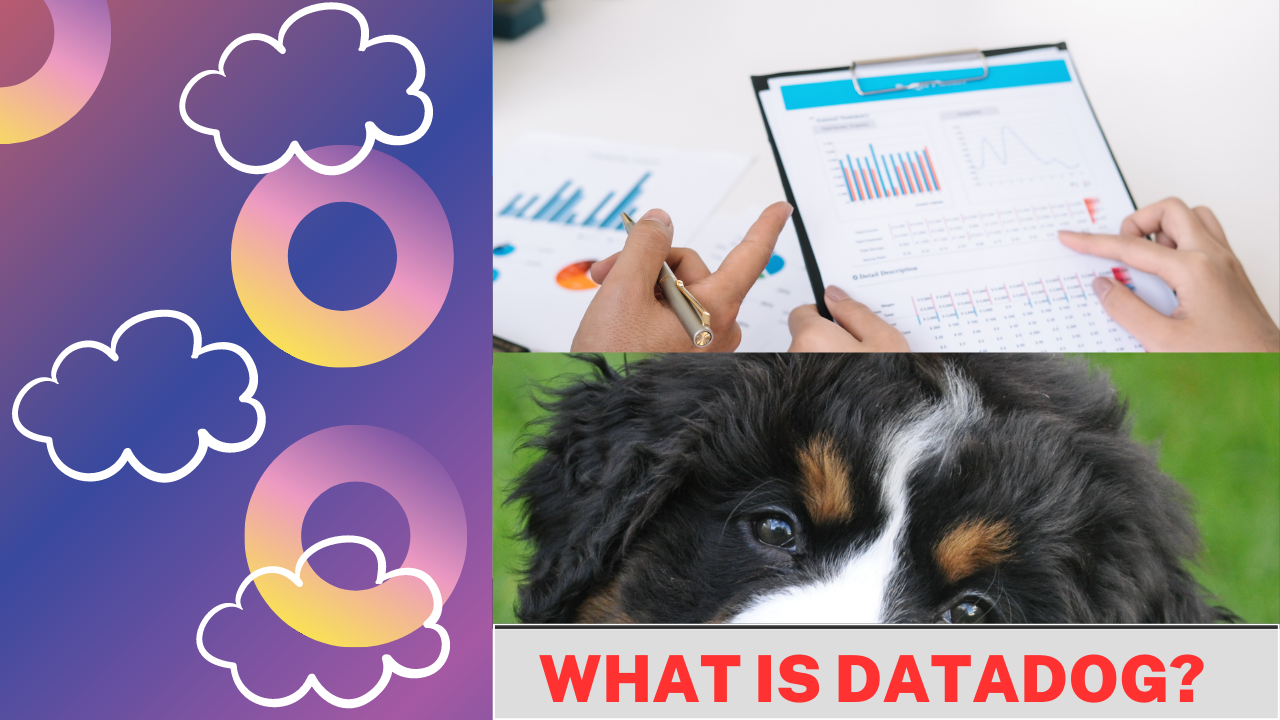|
Getting your Trinity Audio player ready...
|
Datadog is a cloud-based monitoring and analytics platform that helps businesses gain real-time visibility into their IT infrastructure and applications.
It provides a unified view of metrics, traces, and logs from various sources and allows users to analyze, troubleshoot, and optimize the performance of their systems.
We will try to gain everything you need to know about datadog.
Table of Contents
What is Datadog Used For?
Below are few important items datadog used for .
- Infrastructure Monitoring: It monitors the health and performance of servers, containers, databases, and other infrastructure components.
- Application Performance Monitoring (APM): It tracks the performance of applications and provides deep insights into the behavior of individual requests.
- Log Management: It enables users to search, analyze, and visualize their logs in real-time.
- Network Monitoring: It monitors network traffic and provides insights into network performance and security.
- Synthetic Monitoring: It monitors application availability and performance from different locations around the world.
- Real User Monitoring: It tracks user behavior and performance to help optimize the user experience.
Datadog is used by many businesses of all sizes, from startups to large enterprises, to improve their IT operations and ensure the reliability and availability of their applications and services.
What is Datadog Agent?
Datadog Agent is a software application that runs on the servers, virtual machines, or containers in a user’s IT infrastructure. It collects and sends metrics, traces, and logs data to the Datadog cloud platform for analysis and visualization.
The agent is designed to be lightweight and efficient, with minimal impact on the performance of the systems it monitors.
The Datadog Agent can be installed on a wide range of operating systems and platforms, including Linux, Windows, macOS, Kubernetes, Docker, and AWS.
Once installed, it automatically discovers and monitors the components of the user’s infrastructure, such as hosts, containers, services, and applications.
The agent has multiple components, including the collector, the dogstatsd, and the trace agent. The collector collects system-level metrics and logs, while the dogstatsd collects application-level metrics.
The trace agent collects distributed traces from applications and services that support the OpenTracing standard.
The Datadog Agent can also be configured to collect custom metrics and logs from user applications and services, using various programming languages and libraries. The agent provides a flexible and powerful way to monitor and analyze the health and performance of a user’s IT infrastructure, and to troubleshoot and optimize any issues that arise.
How To Verify Datadog Agent Status
There are two ways how you can verify datadog agent staus on RHEL servers using existing compatible methods using ps command or systemctl service.
# systemctl -l | grep datadog datadog-agent-process.service loaded active running Datadog Process Agent datadog-agent-trace.service loaded active running Datadog Trace Agent (APM) datadog-agent.service loaded active running Datadog Agent # ps -ef | grep datadog
How To Stop Datadog Agent
# systemctl stop datadog-agent
How To Disable Datadog Agent
# systemctl disable datadog-agent
It have been observed that it is utilizing too much resources of virtual machine and you may decide to remove it to have your VM performing as expected you may need to remove agent.
How To Remove Datadog Agent
As mentioned above you can use below step by step procedure to remove datadog agent cleanly to have your VM in optimum state.
- Stop Datadog Agent
- Disable Datadog Agent
- Remove symlink from /etc/systemd/system/multi-user.target.wants/datadog-agent.service.
- Validate and ensure there is no process running related to datadog.
# ps -ef | grep datadog root 15727 320 0 16:58 pts/48 00:00:00 grep datadog - Remove Datadog Agent Package & Repository.
# yum remove datadog-agent.x86_64 ============================================================================================ Package Arch Version Repository Size ============================================================================================ Removing: datadog-agent x86_64 1:7.40.1-1 @datadog 890 M Transaction Summary ============================================================================================ Remove 1 Package Installed size: 890 M Is this ok [y/N]: y Removing integrations installed with the 'agent integration' command Removing version history file Removed: datadog-agent.x86_64 1:7.40.1-1 #rm -f /etc/yum.repos.d/datadog.repo
That`s it. You have cleanly removed datadog agent. You can do performance validation it will drastically improved.
What is Datadog in AWS?
Datadog is a cloud-based monitoring and analytics platform that provides real-time visibility into the performance and health of applications and infrastructure in cloud environments, including AWS.
Datadog allows organizations to monitor their AWS resources, such as EC2 instances, RDS databases, Lambda functions, and many others, to gain visibility into the health and performance of their applications running on AWS.
With Datadog, users can collect and analyze metrics, traces, and logs from their AWS resources to troubleshoot issues, optimize performance, and ensure compliance with security and governance policies.
Datadog integrates with various AWS services, including CloudTrail, CloudWatch, and AWS Identity and Access Management (IAM), to provide comprehensive monitoring and alerting capabilities.
In summary, Datadog is a powerful monitoring and analytics platform that helps organizations monitor and optimize their AWS resources and applications.
Why is Datadog so Popular?
Datadog is popular for several reasons:
- Comprehensive Monitoring Capabilities: Datadog offers comprehensive monitoring capabilities that allow users to collect and analyze metrics, traces, and logs from various sources, including applications, infrastructure, and cloud services. This makes it easy for organizations to troubleshoot issues and optimize performance across their entire stack.
- Cloud-Native Architecture: Datadog was designed from the ground up as a cloud-native platform, which means it is optimized for monitoring and managing cloud environments. This makes it easy for users to monitor and manage resources in cloud environments, such as AWS, Google Cloud, and Microsoft Azure.
- Integrations with Popular Tools: Datadog integrates with a wide range of popular tools, including AWS services, Kubernetes, Docker, and many others. This makes it easy for users to incorporate Datadog into their existing workflows and toolchains.
- User-Friendly Interface: Datadog has a user-friendly interface that is easy to navigate and use. This makes it easy for users to quickly identify and troubleshoot issues, without needing to spend time learning complex interfaces or tools.
- Flexible Pricing Model: Datadog offers a flexible pricing model that allows users to only pay for the features they need. This makes it accessible to a wide range of organizations, from small startups to large enterprises.
Overall, Datadog’s comprehensive monitoring capabilities, cloud-native architecture, integrations with popular tools, user-friendly interface, and flexible pricing model have made it a popular choice for organizations looking to monitor and manage their cloud environments.
Is Datadog better than Splunk?
Whether Datadog or Splunk is better depends on the specific needs of the organization and the use case. Both Datadog and Splunk are powerful tools that offer similar capabilities, but they differ in several ways:
- Focus: Datadog is focused on monitoring cloud environments and applications, while Splunk is more broadly focused on analyzing data from various sources.
- Ease of Use: Datadog has a user-friendly interface that is easy to navigate and use, while Splunk can be more complex and require more training to use effectively.
- Cost: Datadog offers a flexible pricing model that allows users to only pay for the features they need, while Splunk can be more expensive and require a larger upfront investment.
- Integrations: Both Datadog and Splunk offer integrations with a wide range of tools and services, but they may differ in the specific integrations that are available.
- Performance: Datadog is known for its high-performance monitoring capabilities, while Splunk may struggle with performance issues when analyzing large amounts of data.
Overall, both Datadog and Splunk are powerful tools that can help organizations monitor and analyze their data. The choice between the two ultimately depends on the specific needs of the organization and the use case.
Is Datadog a Cybersecurity?
Datadog is not solely a cybersecurity tool, but it does offer some cybersecurity-related features. Datadog is primarily a cloud monitoring and analytics platform that provides real-time visibility into the performance and health of applications and infrastructure in cloud environments.
However, Datadog does have some cybersecurity-related features, such as:
- Security Monitoring: Datadog offers security monitoring capabilities that allow users to identify and investigate potential security threats in real-time.
- Compliance: Datadog helps users maintain compliance with security and governance policies through monitoring and auditing capabilities.
- Anomaly Detection: Datadog offers anomaly detection capabilities that help users identify unusual behavior in their infrastructure, which could be indicative of a security breach.
- Threat Detection: Datadog integrates with various security tools and services to provide threat detection capabilities that help users identify and respond to security threats quickly.
In summary, while Datadog is not solely a cybersecurity tool, it does offer some cybersecurity-related features that can help organizations monitor and respond to potential security threats in their cloud environment.
What are the advantages of Datadog monitoring?
There are several advantages of using Datadog monitoring:
- Comprehensive Monitoring Capabilities: Datadog offers comprehensive monitoring capabilities that allow users to collect and analyze metrics, traces, and logs from various sources, including applications, infrastructure, and cloud services. This makes it easy for organizations to troubleshoot issues and optimize performance across their entire stack.
- Real-Time Visibility: Datadog provides real-time visibility into the health and performance of applications and infrastructure in cloud environments. This enables users to quickly identify and respond to potential issues, minimizing downtime and improving user experience.
- Automation: Datadog offers automation capabilities that help users automate tasks, such as scaling infrastructure, responding to alerts, and deploying updates. This makes it easy for organizations to maintain a reliable and scalable infrastructure, without needing to spend time on manual tasks.
- Collaboration: Datadog enables teams to collaborate on monitoring and troubleshooting tasks, by providing real-time visibility and sharing capabilities. This helps teams work together more effectively, improving overall productivity and reducing the time to resolution.
- Customization: Datadog offers customization capabilities that allow users to tailor the monitoring experience to their specific needs. This includes creating custom dashboards, alerts, and integrations, making it easy for organizations to monitor and manage their cloud environment in a way that works best for them.
Overall, Datadog’s comprehensive monitoring capabilities, real-time visibility, automation, collaboration, and customization features provide significant advantages to organizations looking to monitor and manage their cloud environment effectively.
Why Datadog Monitoring?
Datadog monitoring provides a number of benefits for organizations looking to monitor and manage their cloud environment:
- Comprehensive Monitoring: Datadog offers comprehensive monitoring capabilities that allow users to collect and analyze metrics, traces, and logs from various sources, including applications, infrastructure, and cloud services. This provides a complete view of the environment, making it easy to identify and troubleshoot issues.
- Real-time Visibility: Datadog provides real-time visibility into the health and performance of applications and infrastructure in cloud environments. This enables users to quickly identify and respond to potential issues, minimizing downtime and improving user experience.
- Scalability: Datadog is designed to be highly scalable, making it easy to monitor and manage large and complex cloud environments. This allows organizations to maintain a reliable and scalable infrastructure, even as their needs grow and change over time.
- Automation: Datadog offers automation capabilities that help users automate tasks, such as scaling infrastructure, responding to alerts, and deploying updates. This makes it easy for organizations to maintain a reliable and scalable infrastructure, without needing to spend time on manual tasks.
- Collaboration: Datadog enables teams to collaborate on monitoring and troubleshooting tasks, by providing real-time visibility and sharing capabilities. This helps teams work together more effectively, improving overall productivity and reducing the time to resolution.
- Customization: Datadog offers customization capabilities that allow users to tailor the monitoring experience to their specific needs. This includes creating custom dashboards, alerts, and integrations, making it easy for organizations to monitor and manage their cloud environment in a way that works best for them.
Overall, Datadog monitoring provides a comprehensive, scalable, and customizable solution for organizations looking to monitor and manage their cloud environment effectively.
What should I monitor in Datadog?
What you should monitor in Datadog depends on your specific use case and environment. However, here are some general areas that you may want to monitor:
- Infrastructure: Monitor the health and performance of your servers, virtual machines, containers, and other infrastructure components. This can include CPU usage, memory usage, disk I/O, network traffic, and more.
- Applications: Monitor the performance and availability of your applications, including response times, error rates, and throughput. This can help you identify issues that impact the user experience.
- Logs: Collect and analyze logs from your applications and infrastructure components, to gain visibility into issues and troubleshoot problems.
- Metrics: Collect and analyze metrics from your applications and infrastructure components, to gain insight into the behavior and performance of your environment.
- Traces: Collect and analyze traces from your distributed applications, to gain visibility into the performance of individual requests and transactions.
- Network: Monitor network traffic and connectivity between your applications and infrastructure components, to ensure that they are communicating effectively.
- Security: Monitor for security-related events, such as failed logins, unauthorized access attempts, and malware infections.
- Custom Metrics: Monitor any custom metrics that are important to your specific use case, such as user engagement, revenue, or other business metrics.
In summary, what you should monitor in Datadog depends on your specific environment and use case. However, by monitoring infrastructure, applications, logs, metrics, traces, network, security, and custom metrics, you can gain comprehensive visibility into the health and performance of your environment.
Conclusion
In conclusion, Datadog is a cloud-based monitoring and analytics platform that provides comprehensive monitoring capabilities, real-time visibility, automation, collaboration, and customization features to help organizations monitor and manage their cloud environment effectively.
It allows users to collect and analyze metrics, traces, and logs from various sources, including applications, infrastructure, and cloud services, providing a complete view of the environment.
With Datadog, users can monitor infrastructure, applications, logs, metrics, traces, network, security, and custom metrics, depending on their specific needs. Datadog is highly scalable, making it easy to monitor and manage large and complex cloud environments.
Overall, Datadog monitoring provides a comprehensive, scalable, and customizable solution for organizations looking to monitor and manage their cloud environment effectively.




